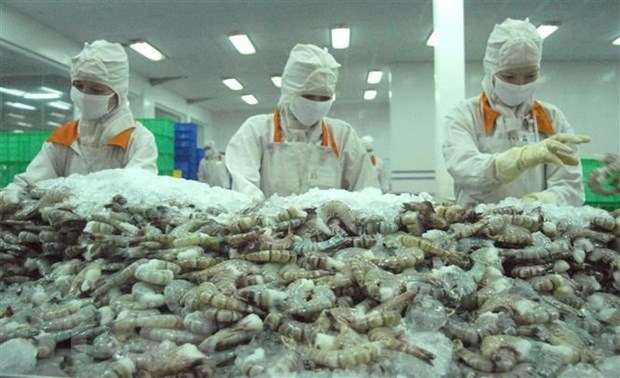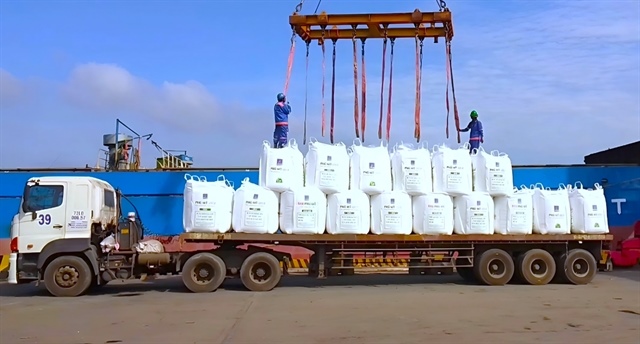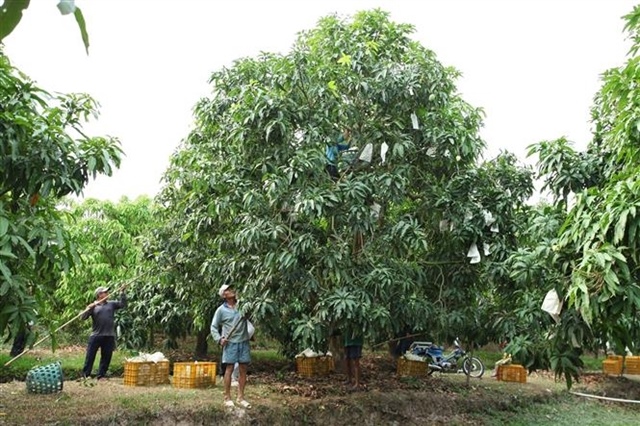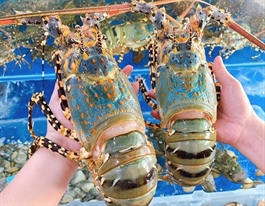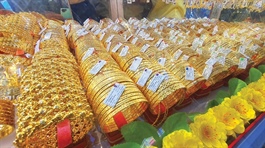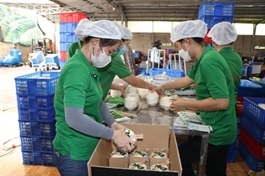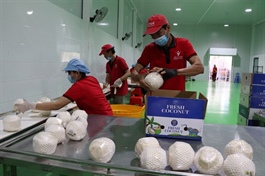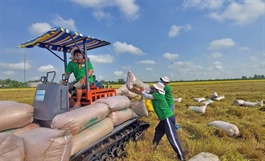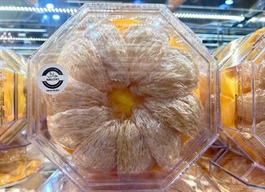Shrimp–coconut farming doubles incomes for Vĩnh Long farmers
Shrimp–coconut farming doubles incomes for Vĩnh Long farmers
In Vĩnh Long Province, home to the country’s largest coconut-growing area, many farmers are now experimenting with raising giant freshwater prawns in coconut orchards, a model that has proved two to three times more profitable than monoculture coconut farming.

Raising giant freshwater prawns in coconut orchards in Vĩnh Long Province helps improve yields and the quality of commercial prawns. VNA/VNS Photo |
In Vĩnh Long Province, home to the country’s largest coconut-growing area, many farmers are now experimenting with raising giant freshwater prawns in coconut orchards, a model that has proved two to three times more profitable than monoculture coconut farming.
For years, the ditches running between coconut rows were used merely to retain irrigation water and wash away acidity and salinity.
But farmer Nguyễn Văn Tài, from Giồng Trôm Commune, saw an opportunity to transform them into a source of income.
With a 5,000sq.m orchard, of which more than a third is covered by water, he invested in simple nets to trap natural prawn larvae drifting into the ditches, while also stocking 2,000 all-male giant freshwater prawn juveniles.
Their feed comes largely from crushed coconuts that traders reject and locally available rice bran.
According to Tài, farming prawns in this way requires modest investment. If farmers take advantage of natural seed sources, profits can be even higher, since wild prawns are known for stronger disease resistance.
After about ten months, prawns weighing 150–200 grammes each can be harvested selectively for sale at premium prices.
With 1,500sq.m of water surface, he earns VNĐ3–4 million (US$118–157) a month, enough to cover his family’s living expenses while his coconut orchard continues to bear fruit as usual.
Another farmer, Nguyễn Văn Ngôi, also from Giồng Trôm, confirmed the dual benefits.
While coconuts bring steady income, the addition of prawns significantly raises returns.
On average, one hectare of integrated farming yields profits of VNĐ70–80 million ($2,750–3,150) a year, around double those from coconuts alone.
He noted that the canopy of coconut palms shades the water, moderating the temperature and encouraging the growth of microorganisms that provide natural feed for prawns.
Fallen fronds and organic debris enrich the water environment, further reducing feed costs and supporting a balanced ecosystem.
Vĩnh Long currently has more than 120,000ha under coconuts, according to Lâm Văn Tân, director of the provincial Department of Agriculture and Environment.
He said that intercropping prawns in coconut orchards brings “dual benefits”, enhancing incomes while making efficient use of natural resources.
With organic coconut cultivation expanding in the province, the combined shrimp–coconut model offers both higher economic value and greater sustainability compared with monoculture.
Agricultural experts advise farmers to follow biosecurity protocols, pay close attention to water quality and use reliable seed sources.
They also encourage collective organisation through co-operatives and farmer groups to share knowledge and strengthen market access.
As consumer demand for coconut-based products and freshwater prawns continues to grow, the integrated shrimp–coconut system is emerging as a promising livelihood option.
Maximising the advantages of the natural environment helps farmers achieve higher incomes while ensuring more sustainable rural development.
- 10:42 17/09/2025


